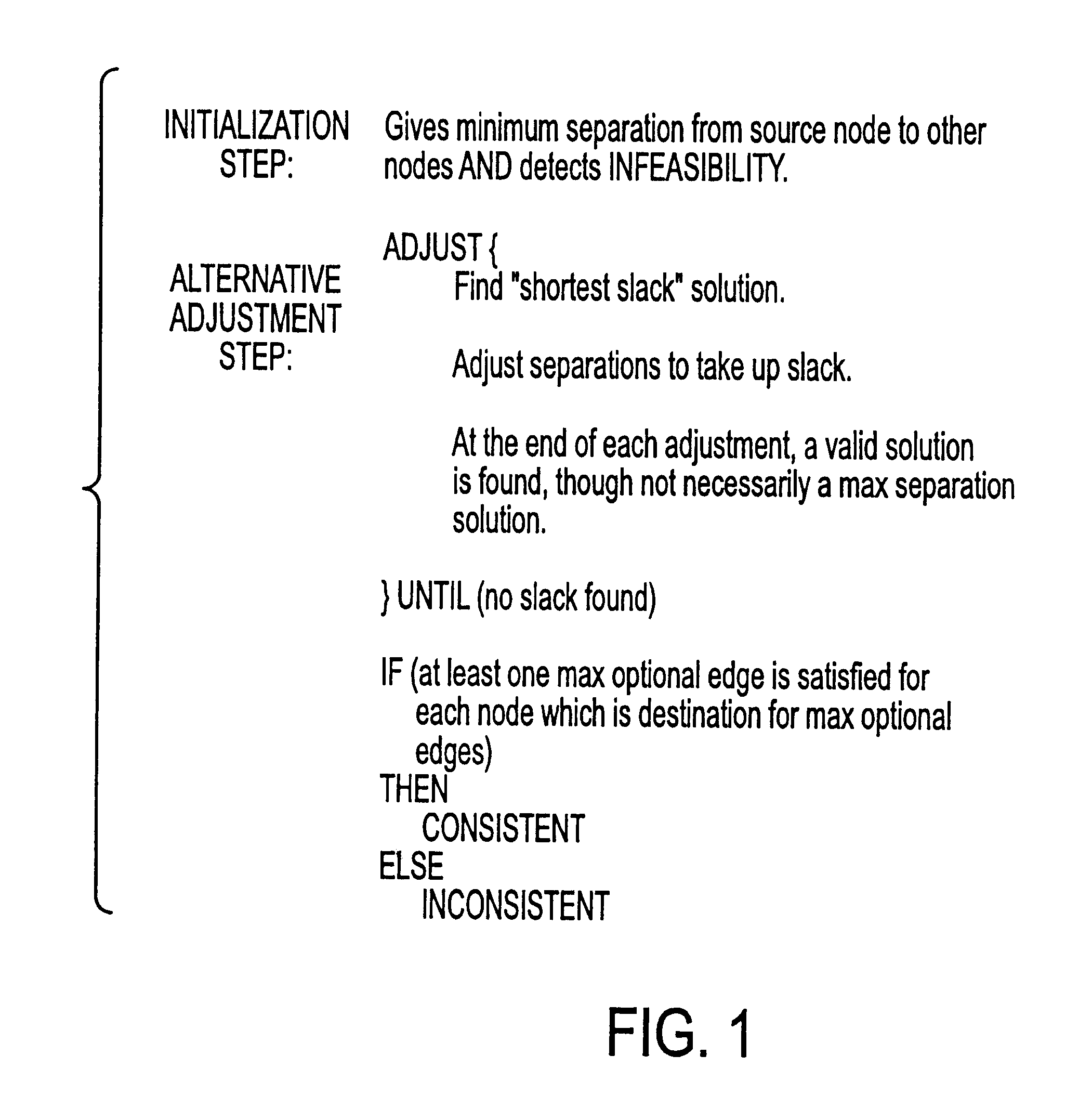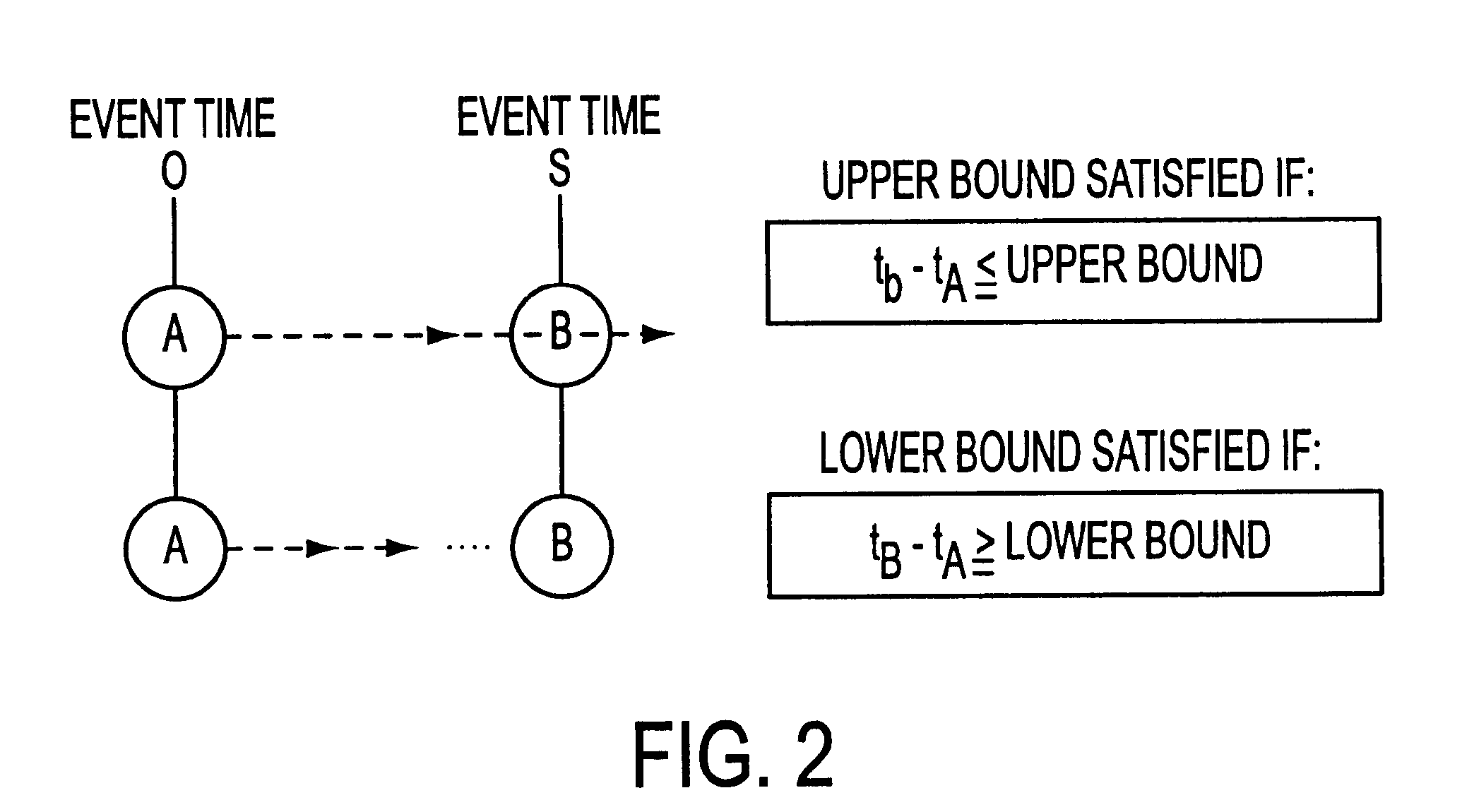System and method for performing timing analysis, including error diagnosis, signal tracking and clock skew
- Summary
- Abstract
- Description
- Claims
- Application Information
AI Technical Summary
Benefits of technology
Problems solved by technology
Method used
Image
Examples
Embodiment Construction
Error diagnosis will be illustrated using a cache read hit bus cycle for an Intel 80386 system. The hardware configuration used in the example is shown in FIG. 6. The 386 microprocessor issues a read request which is routed to the cache controller (32385). The cache controller determines that the data value needed is currently in the cache and enables the transparent latch (74 FCT 373 T) to pass the address to the cache SRAM (2147H-2). Also enabled is a transceiver (74 FTB 245 A) at the output of the SRAM which then makes the data value available on the 386 local data bus for the microprocessor to read at its data ports.
Using the data sheets for the parts specified above, a timing diagram shown in FIG. 7 was created. On the top line of the figure, a violated min bound setup time 386_t21 (between the D0-D31 data inputs of the microprocessor and the microprocessor clock) is shown. The lower and upper bounds of some relevant constraints in this example are given in Table 1. The setup t...
PUM
 Login to View More
Login to View More Abstract
Description
Claims
Application Information
 Login to View More
Login to View More - R&D
- Intellectual Property
- Life Sciences
- Materials
- Tech Scout
- Unparalleled Data Quality
- Higher Quality Content
- 60% Fewer Hallucinations
Browse by: Latest US Patents, China's latest patents, Technical Efficacy Thesaurus, Application Domain, Technology Topic, Popular Technical Reports.
© 2025 PatSnap. All rights reserved.Legal|Privacy policy|Modern Slavery Act Transparency Statement|Sitemap|About US| Contact US: help@patsnap.com



